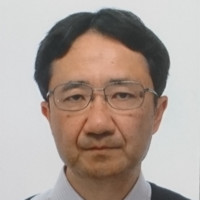Day 1 :
Keynote Forum
Claudia A. Trejo-Soto
Universidad Católica de Valparaiso
Keynote: Front microrheology of blood: relation between viscosity and red blood cells biomechanical properties

Biography:
Claudia Trejo obtained her Ph.D. in Physics at the Universitat de Barcelona in 2016 where she worked with the group of Dynamics of interfaces in nanotechnology, fluidics and biophysics. Since 2018 she is developing her research at the Instituto de Física of the Pontificia Universidad Católica de Valparaíso where she is in charge of an international collaboration project with Barcelona and leads the Biorheology and Microfluidics Laboratory. Here with her group they develop experimental research in interface dynamics in microfluidics, hemorheology, red blood cells dynamics in confined geometries and mechanical properties of red blood cells. Currently, in collaboration with the Institute of Chemistry and the Medical Technology departament of PUCV, she is working on the development of Point of Care diagnostics techniques, relating the viscosity of blood with the mechanical properties of red blood cells
Abstract:
Front Microrheology is a technique developed to track the velocity of the fluid-air interface inside a microfluidics channel and determine the viscosity of the fluid. We use this technique to study the rheological properties of blood. These properties of blood depend highly on the properties of its red blood cells concentration, membrane elasticity and aggregation. These properties affect the viscosity of blood, as well as its shear thinning behavior. Using front microrheology technique, we determine the viscosity of different samples of blood. We propose a model able to predict the health conditions of blood samples by introducing a specific coefficient taking into account the hematocrit and the biomechanical properties of the red blood cells.
Keynote Forum
Francesca Costantini
CREA-DC Research Centre for Plant Protection and Certification
Keynote: Lab-on-glass system based on thin film optoelectronic devices and thick film microfluidics

Biography:
Francesca Costantini is Associate Professor with tenure at DIET at the University of Rome “La Sapienza”. His main research fields concerned the development of amorphous silicon photodetectors for detection of radiation from the UV to the near infrared range and of innovative electronic devices based on amorphous silicon. The present research interest is focused on the development of thin film photodetector and Lab-on-Chip system for DNA amplification and mycotoxin detection. He is referee of several scientific journals, author of more than 100 papers on international journals and principal investigator of national and international projects.
Abstract:
Lab-on-Chip technology is gaining great interest due to the many possibilities that it offers in the fields of life sciences, from parallel analysis in genomics to point-of-care devices in medical diagnostics. At the beginning, Lab-on-Chip devices essentially consisted of a microfluidic network that miniaturized the analytical procedures leading to faster reaction kinetics and lower sample and reagents consumption. Recent devices integrate on a single substrate several functional modules, that allow all the functions of a human-scale test laboratory including transferring samples, drawing off a precise volume of a chemical product, reagent mixing, detection and quantification of biomolecules.
Keynote Forum
Jiayue Shen
Department of Engineering Technology
Keynote: A Numerical Study of a Stretchable Microfluidic-Based Strain Sensor

Biography:
Dr. Jiayue Shen received her Ph.D. degree in Mechanical Engineering from Old Dominion University, U.S., in 2018. In the same year, she joined the engineering technology department at SUNY Polytechnic Institute as an Assistant Professor. Her main research interests are microfluidic devices, flexible electronics, and wireless sensing systems. She has published more than 18 papers/proceedings in reputed Journals and conferences, has been actively working with the state and federal agencies on the funded projects, and has been serving as reviewers and committee members for reputed journals and international conferences.
Abstract:
With the rising interest from many areas, such as human motion detection, human health monitoring, wearable devices, robotics, and structural health monitoring, strain sensors with the features of high flexibility, stretchability, sensitivity, stability, and low cost attract considerable attention. This paper aims to introduce a low cost, highly stretchable microfluidic-based strain sensor capable of detecting strain change up to 160%. The sensor is comprised of a electrolyte-enabled long winding microchannel integrated with a pair of interconnects and a silicone-based packaging. While the sensor is stretched along the sensor length, the transducer pair's overall resistance increases due to the elongation of the microchannel length and reduce of the microchannel cross-section.

Biography:
Hamid Sadabadi is an entrepreneur and researcher in the field of Microfluidics, Lab-on-a-chip, sensors, and biosensors. He has completed his PhD in microfluidic from Concordia University in Montreal. He is recipient of 8 prestigious awards/scholarships inducing Quebec Doctoral Merit Scholarship and University of Calgary Eyes High Postdoctoral Fellowship where he did his postdoc research.
Abstract:
Gas detectors attract many research interests due to their wide applications in the areas of environmental monitoring, homeland security, anti-terrorism, industrial quality control, etc. In this work, presents the development of a sensitive integrated and in-line modular platform for detection of toxic gases in a dusty environment where many microscale particles are presenting in the environment. The platform encompasses three main modules including a microfluidic system for in-line and continuous filtering of the dust from the inlet gas, an adsorption unit for toxic gas adsorption encompasses a reservoir filled with Zeolite X13 nanoparticles and a novel 3D microwave circuit for the gas detection.
Keynote Forum
ETIENNE Pascal
Department of Microfluidics
Keynote: Digital microfluidics as a tool for drug delivery and formulation screening
Time : 12: 20 -12:45

Biography:
He has completed his PhD on nanostructured materials in 2003 from Orleans University and Postdoctoral Studies from Institute of nanosciences (IM2NP) , Marseille University, France. He was the Director of Winfab (Louvain-la-Neuve, Belgium) , a micro-nano fabrication platform for 8 years. He is now the head scientist of the research department of Medincell.
Abstract:
Microfluidic devices present many advantages for the development of efficient drugs as they offer rapid techniques for direct drug screening. They not only optimize resource management, but also enable massive parallelization for tests with significant economies of scale. The precise control of experimental conditions and the very low volumes involved in microfluidics solutions match the requirements of 2D and 3D cell cultures as well as organs on a chip, which is key to narrowing the bridge between in vitro and in vivo environments.
Keynote Forum
Ganguli A
School of Engineering and Applied Sciences, Ahmedabad University, India
Keynote: Three dimensional CFD simulations to study flow patterns in water-ionic liquid systems
Time : 2:00-2:30

Biography:
Dr Ganguli received his PhD from the Institute of Chemical Technology, Mumbai in 2009. He has more than thirteen years of overall experience in industry and academia, with projects spanning computational fluid dynamics of multiphase flows, process modeling, process equipment design and optimization. He began his career as a post-doctoral researcher with the University of Paderborn, Germany. There, he worked on model development for mass transfer across interfaces and droplet coalescence. Subsequently, he joined the Paul Scherrer Institute, Switzerland, Technoforce Solutions, Mumbai and SABIC R&D.
Abstract:
Understanding of flow patterns is extremely essential for efficient design of microfluidic systems. In a step towards this objective, CFD simulations have been carried out for water-ionic liquid system in two types of micro-channels 120 x 240 μm and 100 x 400 μm respectively for superficial velocity range of 0.3 – 1.16 mm/s in case of ionic liquids and in the range of 0.15 – 580 mm/s in case of water. The flow patterns of plug and parallel flows have been found to be match well with the results from published literature. Challenges were observed in simulations related to throat annular flows. The quantitative values of plug velocities as per experimental data available in the literature matched well with predicted values with a maximum deviation of 7-8%.

